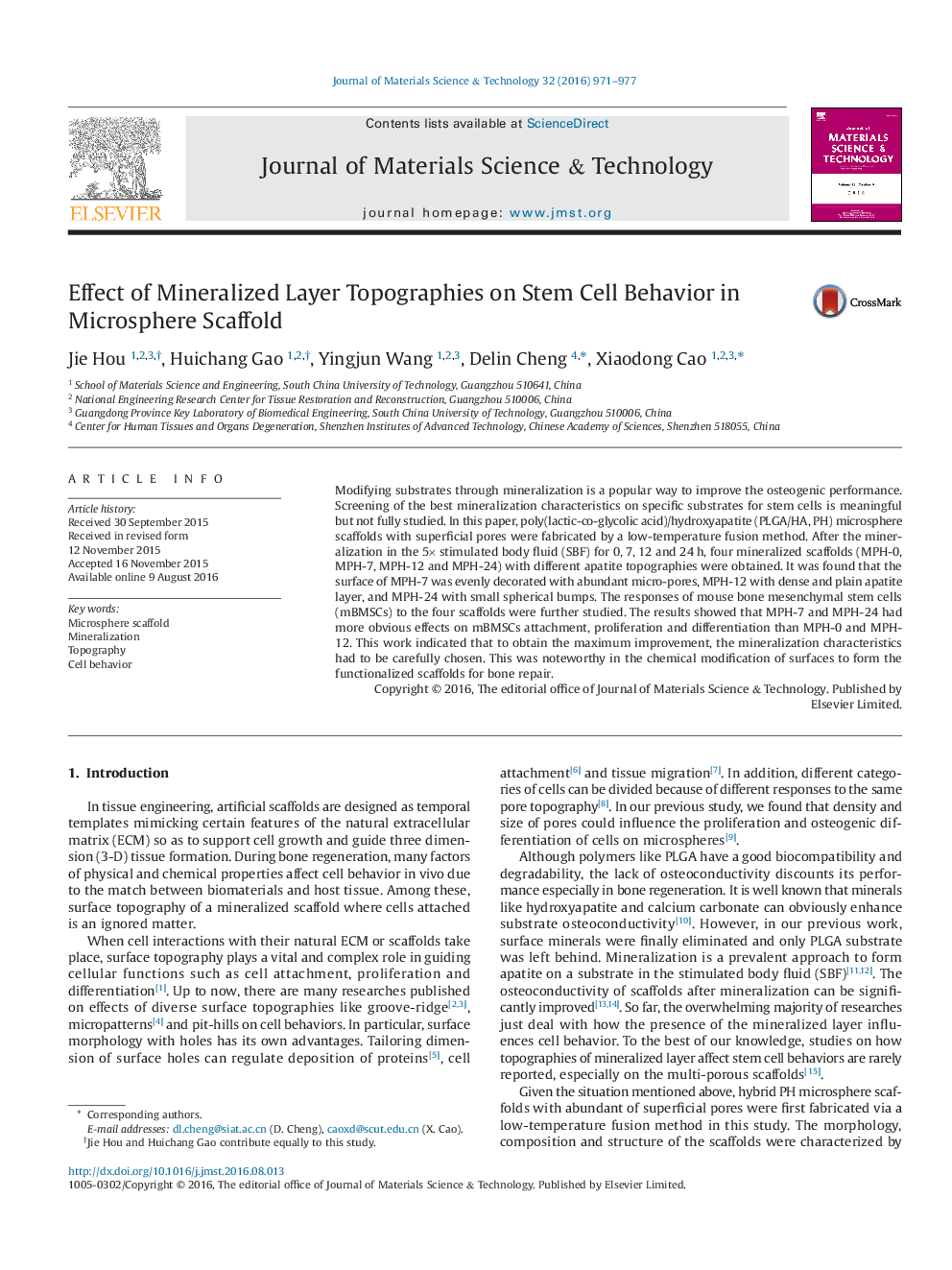| Article ID | Journal | Published Year | Pages | File Type |
|---|---|---|---|---|
| 1555739 | Journal of Materials Science & Technology | 2016 | 7 Pages |
Abstract
Modifying substrates through mineralization is a popular way to improve the osteogenic performance. Screening of the best mineralization characteristics on specific substrates for stem cells is meaningful but not fully studied. In this paper, poly(lactic-co-glycolic acid)/hydroxyapatite (PLGA/HA, PH) microsphere scaffolds with superficial pores were fabricated by a low-temperature fusion method. After the mineralization in the 5Ã stimulated body fluid (SBF) for 0, 7, 12 and 24âh, four mineralized scaffolds (MPH-0, MPH-7, MPH-12 and MPH-24) with different apatite topographies were obtained. It was found that the surface of MPH-7 was evenly decorated with abundant micro-pores, MPH-12 with dense and plain apatite layer, and MPH-24 with small spherical bumps. The responses of mouse bone mesenchymal stem cells (mBMSCs) to the four scaffolds were further studied. The results showed that MPH-7 and MPH-24 had more obvious effects on mBMSCs attachment, proliferation and differentiation than MPH-0 and MPH-12. This work indicated that to obtain the maximum improvement, the mineralization characteristics had to be carefully chosen. This was noteworthy in the chemical modification of surfaces to form the functionalized scaffolds for bone repair.
Related Topics
Physical Sciences and Engineering
Materials Science
Materials Chemistry
Authors
Jie Hou, Huichang Gao, Yingjun Wang, Delin Cheng, Xiaodong Cao,
